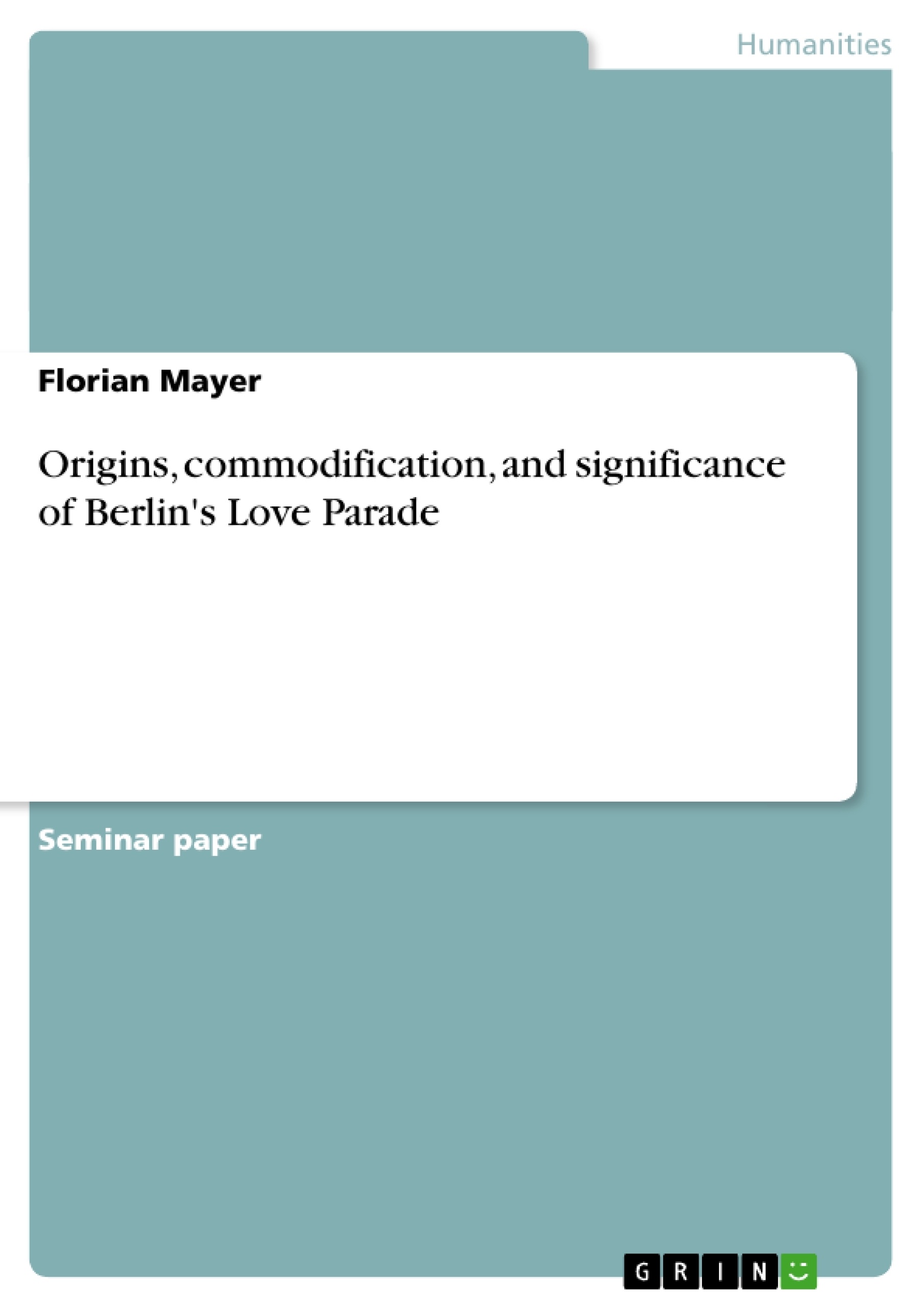Carnival, as an ideal type identified by Cohen, ′is a season of festive popular events that are characterized by revelry, playfulness, and overindulgence in eating, drinking and sex, culminating in one or two days of massive street processions by masqued individuals and groups, playing or dancing ecstatically to the accompaniment of loud and cheerful music. Also, every carnival is a place in which 'hegemonous and opposition political formations […], alliance and enmity, consensus and conflict are expressed like a grand joking relationship'. In the light of this it is worthwhile to examine contemporary carnivals as movements of cultural production and places of cultural policy and contestation. In this case study the author focusses on a very recent offspring of carnival culture, which has in a short period of time outnumbered the traditional carnivals in London′s Notting Hill district and Trinidad, and has at one time been the biggest street dance event and youth meeting in the world. The Love Parade in Berlin, initially held as a birthday party for a Berlin DJ, Dr Motte (Mathias Roeingh) in 1989, has developed from an underground electronic dance music event (or better demonstration) and the voice of the (German) techno and rave scene, often referred to as ′Generation X′, to a mass event with 1.5 million visitors in 1999. Today, the parade, has been turned into a ′global brand′ with offshoot events held in Vienna, Mexico City, Leeds, Tel Aviv and plans for parades in Cape Town and Hong Kong. In the following the origins, the increasing commodification and the cultural as well as political significance of the Love Parade are being examined.
Inhaltsverzeichnis (Table of Contents)
- Origins, commodification and significance of Berlin's Love Parade
- Origins
- Commodification
- Significance
Zielsetzung und Themenschwerpunkte (Objectives and Key Themes)
This case study examines the origins, commodification, and cultural and political significance of the Love Parade, a large-scale street dance event that originated in Berlin and has grown into a global phenomenon.
- The evolution of the Love Parade from its beginnings as a small, underground event to a mass gathering.
- The role of techno music and club culture in the Love Parade's development.
- The increasing commercialization of the Love Parade and its impact on its original ideals.
- The political and social significance of the Love Parade as a space for expression and cultural contestation.
Zusammenfassung der Kapitel (Chapter Summaries)
- Origins: The Love Parade emerged from the vibrant Berlin club scene of the early 1990s, initially conceived as a demonstration for peace, happiness, and social equality. The event's music, acid-house, played a crucial role in creating a shared experience and fostering a sense of community among attendees.
- Commodification: As the Love Parade gained popularity, it attracted commercial sponsorship and the event's original focus on grassroots participation was gradually undermined. The increasing commercialization, manifested in the presence of corporate sponsors and the inclusion of commercial floats, led to concerns about the commodification of techno culture and the event's authenticity.
Schlüsselwörter (Keywords)
The Love Parade, techno music, club culture, commodification, commercialization, cultural production, cultural policy, youth culture, social movements, Berlin, Germany, globalisation.
- Quote paper
- Florian Mayer (Author), 2002, Origins, commodification, and significance of Berlin's Love Parade, Munich, GRIN Verlag, https://www.grin.com/document/9037




